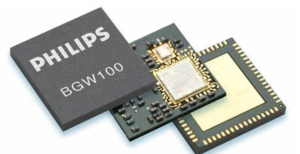Understanding RF IC Design – The Core of Wireless Technology
Last Updated on September 3, 2025 by Sasmita
Introduction
Radio Frequency Integrated Circuit (RF IC) design is one of the most critical fields in modern electronics that enables wireless communication and high-frequency signal processing. With the growing demand for mobile devices, IoT applications, and next-generation networks like 5G and 6G, RF IC design has become essential in creating compact, efficient, and reliable circuits that can operate at high frequencies, typically ranging from a few megahertz (MHz) to several gigahertz (GHz).

What is RF IC Design?
RF IC design refers to the process of creating integrated circuits that work at radio frequencies. Unlike conventional digital circuits, RF ICs handle analog signals at very high frequencies, where effects such as parasitics, electromagnetic interference, and noise dominate. The design involves specialized techniques to ensure proper amplification, frequency conversion, and signal transmission with minimal distortion.
Key Components of RF ICs
An RF IC typically integrates multiple building blocks on a single chip. Some of the most important components include:
-
Low Noise Amplifier (LNA): LNA is used to boost weak incoming signals while minimizing the noise.
-
Mixers: It convert signals between different frequency bands (up-conversion or down-conversion).
-
Oscillators & Phase-Locked Loops (PLLs): It is used to generate stable carrier frequencies.
-
Power Amplifiers (PA): It is used to increase signal strength for transmission.
-
Filters and Matching Networks: It provide frequency selectivity and impedance matching.
Together, these blocks form the backbone of wireless transceivers used in smartphones, Wi-Fi routers, and radar systems.
Challenges in RF IC Design
Designing circuits at high frequencies is significantly more complex than digital or low-frequency analog IC design. Some major challenges include:
-
High-Frequency Effects: Parasitic capacitances and inductances dominate performance at GHz frequencies.
-
Noise Management: Essential for clear signal reception in LNAs and mixers.
-
Power Efficiency: Particularly critical in mobile and IoT devices with limited battery life.
-
Integration: Combining RF, analog, and digital circuits on the same chip requires careful isolation to prevent interference.
-
Technology Constraints: Designers must choose between CMOS, BiCMOS, GaAs, or advanced semiconductor technologies depending on performance and cost requirements.
RF Abstraction Levels
Below are the general abstraction levels for RF ICs:
- Functional
- Behavioral
- Macro
- Circuit
- Transistor
- Physical layout
RF IC Design Flow
The following describes the workflow that to design an RF integrated circuit:
Design specification
- Specifications
- Constraints
- Topologies
- Test bench development
System design
- High-level system design and budgeting
- Behavioral modeling
Circuit Synthesis
- HDL Mixed-level SIM
- Mixed-level partitioning
Circuit Design
- Use of foundry design kit
- Spiral inductor synthesis/modeling
- Detailed circuit design
Circuit Simulation
- Time domain
- Frequency domain
Physical Design
- Layout
- Electromagnetic simulation and extraction
- Parasitic extraction
-
- Extraction of on-chip passives
- Extraction of package parasitics
-
- Design rules check (DRC)
- Layout versus schematic (LVS)
Verification in systems test bench
Sign-off Net extraction/Tape-out
Applications of RF ICs
RF ICs are the heart of modern communication and sensing technologies. Some key applications include:
-
Mobile Communication (4G, 5G, 6G)
-
Wi-Fi, Bluetooth, ZigBee, and other short-range wireless standards
-
Radar systems for automotive and defense
-
Satellite communication
-
Internet of Things (IoT) and wearable devices
Future of RF IC Design
With the rapid growth of wireless data usage, RF IC design continues to evolve toward higher frequencies (mmWave and beyond), lower power consumption, and greater integration. Emerging technologies such as silicon photonics, AI-assisted RF design, and quantum communication circuits may further push the boundaries of this field.
Conclusion
RF IC design is the foundation of wireless communication and plays a pivotal role in shaping modern technology. By integrating complex high-frequency circuits onto compact chips, engineers enable smartphones, smart homes, autonomous vehicles, and next-generation networks to function seamlessly. As demand for faster and more reliable wireless systems increases, the importance of RF IC design will only continue to grow.